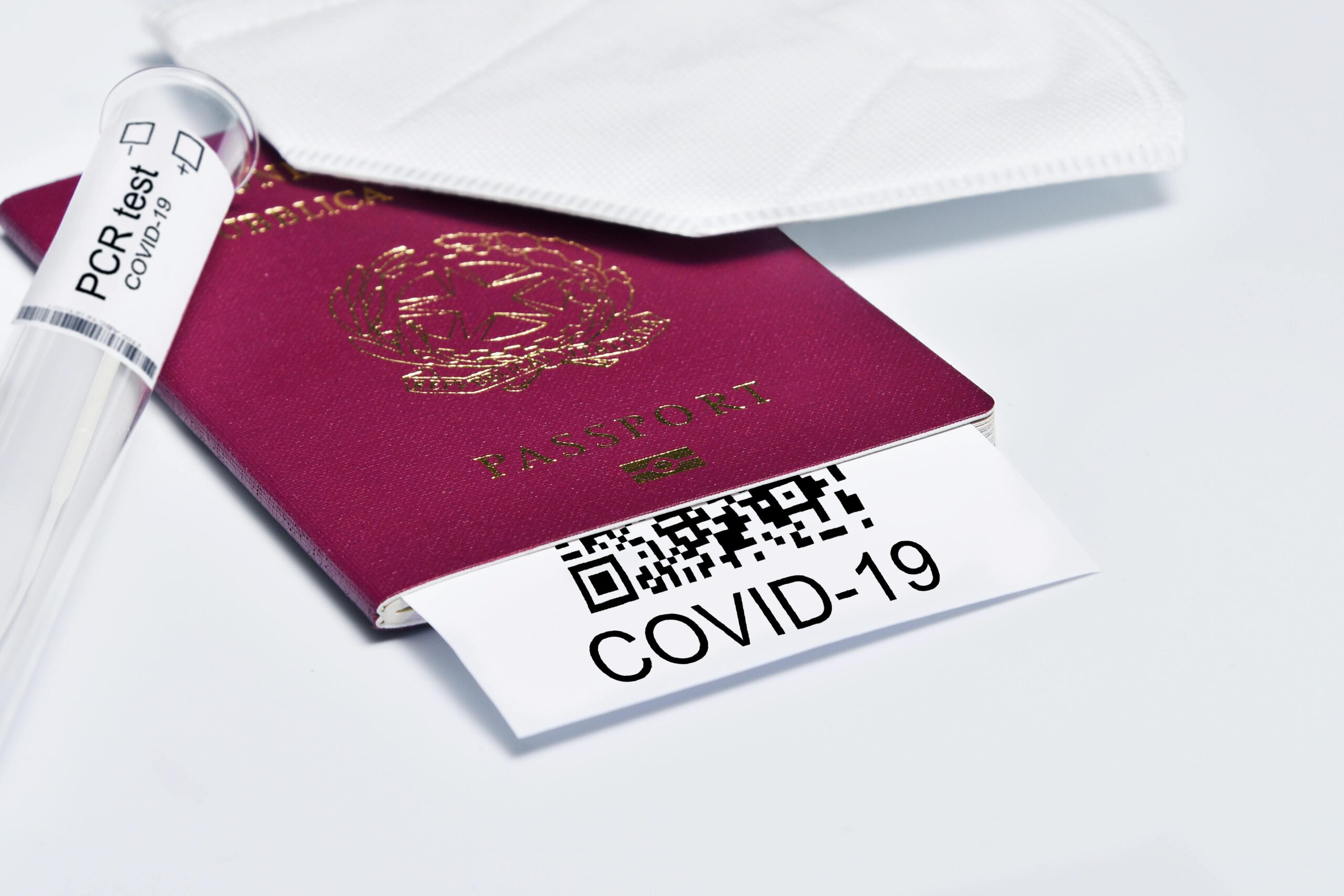Table of Contents
- Understanding the Foundations of Medical Inadmissibility in Canadian Immigration
- The Crucial Concept of Excessive Demand on Health Services
- Proactively Addressing Potential Medical Inadmissibility Concerns
- Responding to a Procedural Fairness Letter: A Pivotal Moment in Your Application
- Frequently Asked Questions
Understanding the Foundations of Medical Inadmissibility in Canadian Immigration
For skilled professionals dreaming of a new life in Canada through the Express Entry system, receiving an Invitation to Apply (ITA) is a moment of profound excitement. However, the journey to permanent residence involves several critical steps, with the immigration medical exam (IME) being one of the most significant hurdles. A pre-existing medical condition does not automatically close the door to Canada, but it does mean that applicants must carefully navigate the complex rules surrounding medical inadmissibility. Under Canada’s Immigration and Refugee Protection Act (IRPA), a foreign national may be found medically inadmissible on one of three grounds. It is essential for applicants to understand these grounds to prepare a robust application and preemptively address any potential concerns an immigration officer might have. These determinations are not made lightly and are based on a thorough assessment of an individual’s health status and its potential impact on Canada’s publicly funded systems.
The three core grounds for medical inadmissibility are:
- Danger to Public Health: This typically relates to certain communicable diseases, such as active tuberculosis or untreated syphilis. The focus is on conditions that could pose a risk to the health of the Canadian population. The assessment is based on the results of the IME, which includes standard tests to screen for these specific conditions.
- Danger to Public Safety: This is less common and usually involves conditions that could lead to sudden incapacity or unpredictable, violent behaviour. For instance, certain neurological or psychiatric conditions that are poorly controlled might fall into this category if they are deemed to pose a risk to the safety of others.
- Excessive Demand on Health or Social Services: This is by far the most common reason for a finding of medical inadmissibility among economic immigrants, including those in the Express Entry stream. It is a complex determination based on the potential cost of an applicant’s medical needs and their impact on Canada’s healthcare and social support systems. Successfully navigating this aspect is paramount for any applicant with a chronic or significant pre-existing condition.
The Crucial Concept of Excessive Demand on Health Services
The principle of “excessive demand” is designed to protect Canada’s universal healthcare system from unsustainable financial burdens. For an Express Entry applicant, this is the most critical area of medical inadmissibility to understand. An applicant is considered to place an excessive demand if the health or social services required to treat their condition would adversely affect wait times for services in Canada or if the anticipated costs would exceed a specific annual threshold. This threshold is updated yearly and is calculated as three times the Canadian average per capita cost of health and social services. For 2024, this amount is set at $26,220 per year. Over a five-year period, the cumulative threshold is $131,100. If an immigration medical officer determines that an applicant’s condition is likely to require services costing more than this amount, they may issue a preliminary finding of inadmissibility.
It is important to note that certain services are not included in this calculation, such as special education, social and vocational rehabilitation services, and personal support services. However, a wide range of provincially funded treatments, from prescription drugs to diagnostic services and physician visits, are factored in. Conditions that often trigger a review for excessive demand include chronic kidney disease requiring dialysis, cardiac diseases, certain cancers, HIV/AIDS requiring antiretroviral therapy, and developmental disorders that necessitate extensive ongoing care. It is also vital to understand that certain categories of immigrants, such as refugees and sponsored spouses or children, are exempt from the excessive demand provision. However, applicants under economic streams like Express Entry are not exempt and must demonstrate that their condition will not surpass this financial threshold.
Proactively Addressing Potential Medical Inadmissibility Concerns
A proactive approach is the best strategy for any Express Entry candidate with a known medical condition. Waiting for an immigration officer to raise a concern can put an applicant on the defensive. Instead, taking control of the narrative from the outset can significantly strengthen the application. The first step is the Immigration Medical Exam (IME), which must be conducted by a designated Panel Physician. While many applicants wait until after they receive an Invitation to Apply (ITA), those with pre-existing conditions may benefit from completing an upfront medical exam. This allows them to understand potential issues early and begin gathering the necessary documentation to build a case against a potential inadmissibility finding. The Panel Physician’s role is to conduct the examination and report the findings to Immigration, Refugees and Citizenship Canada (IRCC); they do not make the final decision on admissibility.
Beyond the standard IME, a key strategy is to compile a comprehensive package of medical evidence. This documentation should go far beyond a simple diagnosis. It needs to tell a complete story of the applicant’s health, prognosis, and expected needs in Canada. A well-prepared file can preemptively answer the questions an immigration officer will have about the potential strain on the healthcare system.
- Specialist Reports: Obtain detailed letters from treating specialists. These reports should describe the medical condition, current treatment plan, stability of the condition, and long-term prognosis. Critically, the specialist should provide a detailed breakdown of the required medications and services, along with their anticipated costs in Canada.
- Personalized Mitigation Plan: Begin drafting a mitigation plan even before it is requested. This document outlines how the applicant intends to cover any potential medical costs to ensure they do not become a burden on the public system. This can include evidence of private health insurance, proof of significant personal funds, or support from family members in Canada.
- Provincial Research: Demonstrate an understanding of the healthcare system in the intended province of settlement. Research the availability and cost of required treatments, including whether they are covered by the provincial health plan and the current status of public wait times for those services.
- Letters of Support: If applicable, include letters from potential employers or family in Canada who are willing and able to provide financial or personal support.
Responding to a Procedural Fairness Letter: A Pivotal Moment in Your Application
If a visa officer has concerns that an applicant may be medically inadmissible, they will not simply refuse the application outright. Instead, they will issue what is known as a Procedural Fairness Letter (PFL). Receiving a PFL can be alarming, but it is a fundamental part of the Canadian immigration process, providing an applicant with the opportunity to respond to the officer’s concerns before a final decision is made. This is a critical juncture where a well-prepared, detailed, and persuasive submission can be the difference between approval and refusal. The PFL will outline the officer’s specific concerns, typically referencing the medical condition and the anticipated costs that they believe will lead to an excessive demand. The applicant is usually given a specific timeframe, often 30 to 60 days, to provide a response.
The cornerstone of a successful response to a PFL is a comprehensive and credible mitigation plan. This is not simply a promise to pay for medical care; it is a detailed, evidence-based submission demonstrating the applicant’s ability and intent to defray the costs of their healthcare. The plan must directly address the officer’s concerns and prove that the initial cost estimate may be inaccurate or that the applicant will not rely on public funds for the services in question. Key elements of a strong mitigation plan include providing updated medical reports that might show an improved prognosis or a less costly treatment regimen. Furthermore, evidence of substantial personal funds, such as bank statements or investment portfolios, can demonstrate the financial capacity to pay for treatments out-of-pocket. Finally, securing quotes for private health insurance that would cover the specific condition can be powerful evidence, as can a statutory declaration affirming the intent to use private funds for medical care. A meticulously prepared response shows the immigration officer that the applicant is well-informed, responsible, and will not place an undue burden on Canada’s cherished healthcare system.
Frequently Asked Questions
What is medical inadmissibility in Canada?
Medical inadmissibility refers to the grounds under which a foreign national may be denied entry or permanent residence in Canada due to a health condition. The primary reasons are if the condition poses a danger to public health or safety, or if it is expected to cause an excessive demand on Canada’s health or social services.
What does “excessive demand” mean for an Express Entry application?
For an Express Entry applicant, “excessive demand” means that the anticipated cost of their medical or social service needs would exceed a specific annual financial threshold set by the Canadian government. If an applicant’s condition is projected to cost more than this amount, currently $26,220 per year, they may be found medically inadmissible.
How can an applicant respond to a concern about medical inadmissibility?
An applicant can respond by submitting a detailed mitigation plan. This plan should include comprehensive medical reports from specialists, evidence of financial resources to cover costs, proof of private health insurance, and any other documentation that demonstrates they will not place an undue burden on Canada’s public healthcare system.
What is a Procedural Fairness Letter (PFL)?
A Procedural Fairness Letter is a formal communication from an IRCC officer indicating a preliminary finding of inadmissibility. It outlines the officer’s concerns and gives the applicant a final opportunity to submit new information or arguments to address these concerns before a final decision is made on their application.
Talk to us to find out more. ->
The content above is not intended to provide legal advice or opinions of any kind and may not be used for professional or commercial purposes.







